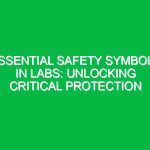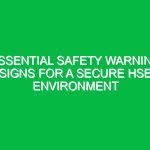Welcome Team!
Good morning everyone! Today’s Toolbox Talk is crucial for our Safety and well-being while working. We’re going to focus on slips—specifically, what they are, how they can affect us, and the Best Practices to prevent them. Understanding slips within the context of Health, Safety, and Environment (HSE) is essential for maintaining a safe working environment. So, let’s dive in!
Understanding Slips in the Workplace
First, let’s clarify what we mean by slips. A slip occurs when there is a loss of traction between your foot and the walking surface. This can happen due to various factors, including wet floors, uneven surfaces, or inappropriate footwear. In the HSE context, slips can lead to serious injuries, and it’s vital that we recognize the Hazards associated with them.
The Importance of Addressing Slips
Slips are one of the leading causes of workplace accidents. According to the National Safety Council, slips, trips, and falls account for a significant percentage of injuries in various industries. These incidents not only jeopardize our health but can also disrupt operations and lead to costly workers’ compensation claims. By focusing on slips during our Toolbox Talks, we can work together to minimize risks and ensure a safer workplace for everyone.
Common Causes of Slips
Let’s take a closer look at some common causes of slips that we might encounter on the job:
- Wet or Slippery Surfaces: This includes spills, rain, or cleaning activities that leave floors slick.
- Uneven Surfaces: Cracks, holes, or changes in elevation can create tripping Hazards.
- Obstructions: Cords, tools, or materials left in walkways can lead to slips.
- Inadequate Footwear: Wearing shoes that do not provide the necessary grip can increase the risk of slipping.
Real-Life Example
Let’s consider a scenario: Imagine it’s a rainy day, and one of our coworkers is walking towards the storage area. The floor is wet from the rain, and they are wearing shoes that do not have slip-resistant soles. As they approach a corner, they lose their footing and fall. This not only results in injury but could have been prevented with proper attention to the conditions and appropriate footwear. This serves as a reminder of how crucial it is to be aware of our surroundings and take action to mitigate risks.
Identifying Potential Hazards
Now that we know what causes slips, let’s discuss how we can identify potential hazards in our work environment:
- Conduct Regular Inspections: Regularly check work areas for wet floors, uneven surfaces, or obstacles.
- Encourage Reporting: Encourage everyone to report hazards immediately so they can be addressed.
- Use Signage: Place warning signs in areas that may pose slip risks, such as wet floors.
Best Practices to Prevent Slips
Prevention is key when it comes to slips. Here are some Best Practices everyone should follow:
- Keep Walkways Clear: Ensure that all walkways are free from obstructions at all times.
- Use Appropriate Cleaning Methods: When cleaning spills, use absorbent materials and ensure the area is marked accordingly.
- Wear Proper Footwear: Invest in shoes with slip-resistant soles and appropriate support.
- Maintain Good Lighting: Ensure all work areas are well-lit to help identify potential hazards.
Training and Awareness
Training is an essential component of slip Prevention. All employees should receive Training on recognizing and mitigating slip hazards. This includes understanding how to identify risks and what to do when encountering a slip hazard. Additionally, toolbox talks, like the one we’re having today, play a vital role in raising awareness and reinforcing Safe Practices.
Open Discussion
Now, let’s take a moment to engage in an open discussion. Have you ever experienced a slip at work? What did you learn from that experience? How can we improve our practices to better prevent slips? Your input is invaluable in enhancing our Safety culture.
Regulations and Compliance
It’s important to note that many Regulations and Standards address slip prevention. For instance, the Occupational Safety and Health Administration (OSHA) has established guidelines for maintaining safe walking-working surfaces. Compliance with these regulations not only keeps us safe but also protects our company from legal repercussions. Make sure you are familiar with these regulations and how they apply to your specific tasks.
Conclusion
To wrap up today’s Toolbox Talk, we’ve discussed the importance of understanding slips, their common causes, and best practices for prevention. Remember, it’s everyone’s responsibility to maintain a safe work environment. By being proactive and aware of potential hazards, we can significantly reduce the risk of slips and ensure that everyone goes home safe at the end of the day.
Thank you for your attention and commitment to safety! Let’s make sure we apply what we’ve learned today and support each other in maintaining a slip-free workplace.


